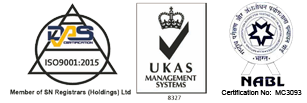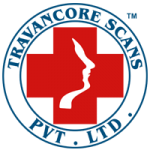CT Lung Screening
What Is CT Lung Screening?
CT lung screening is a noninvasive, painless procedure that uses low-dose X-rays to screen the lungs for cancer in just 30 seconds. A CT lung screening allows the radiologist to look at different levels, or slices, of the lungs using a rotating X-ray beam. It is performed on a multislice spiral computed tomography (CT) scanner and can detect smaller nodules or cancer than standard chest X-rays.
A tumor or nodule is a mass of cells that grows on the lungs. It can be benign (noncancerous) or malignant (cancerous). By detecting malignant tumors in an early stage with CT lung screening, the cancer cells can be treated at a time when the cancer still has promising survival rates and is localized to the lungs.
How Is CT Lung Screening Performed?
There are no preparations required for this study. During the exam, patients lie on their backs on an exam table with arms above the head. They must hold their breath briefly as the pictures are being taken. For a short period of time, the body may be covered by a scanner, but the scanner is open at the back and front so that the patient can see out. The technologist is always able to see and hear the patient during the five-minute procedure.
Why Is Lung Screening Important?
It is estimated that over 80 percent of lung cancers could be cured if detected at an early stage. Unfortunately, only 15 percent of lung cancers are caught at this stage, making the five-year survival rate for all stages of lung cancer 20 percent. Catching lung cancer in an early stage while it is still localized to the lung is essential. A person’s chance of survival decreases when the tumor grows to be 3 centimeters or more. If the cancer spreads to areas of the body outside the lungs, the survival rate is only 5 percent, compared with 70 percent if the cancer is detected early. CT lung screening is capable of detecting lung nodules as small as 2 or 3 millimeters. By catching malignant tumors when they are still small, they can be surgically removed before disease spreads to other areas of the body.
Who Should Have Lung Screening?
Radiology recommend lung screening for individuals between 55 and 77 who have any of the following risk factors:
- History of lung cancer
- 30 pack-year or more smoking history (one pack of cigarettes per day for 30 years, two packs of cigarettes per day for 15 years, etc.)
- Past history of 30 pack-year smoking (less than 15 years ago)
- Exposure to other cancer-causing agents (eg, asbestos and radon)


